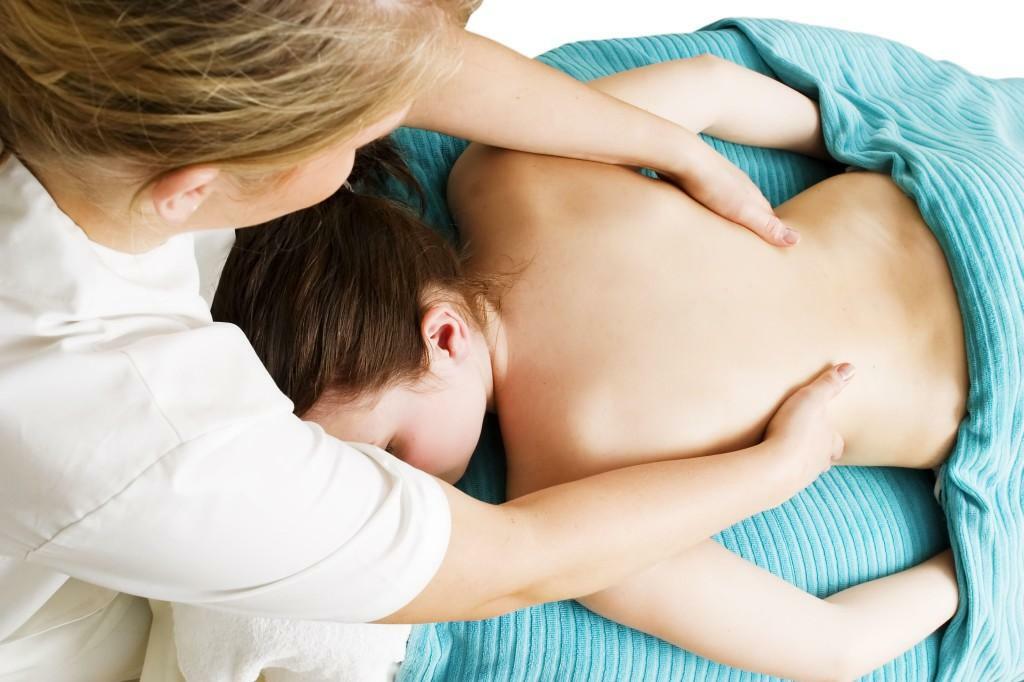The spine is one of the most important components of the human body. This element is responsible for maintaining the shape of the body and protecting the spinal cord, allowing the person to occupy a straight vertical position and make smooth slopes.
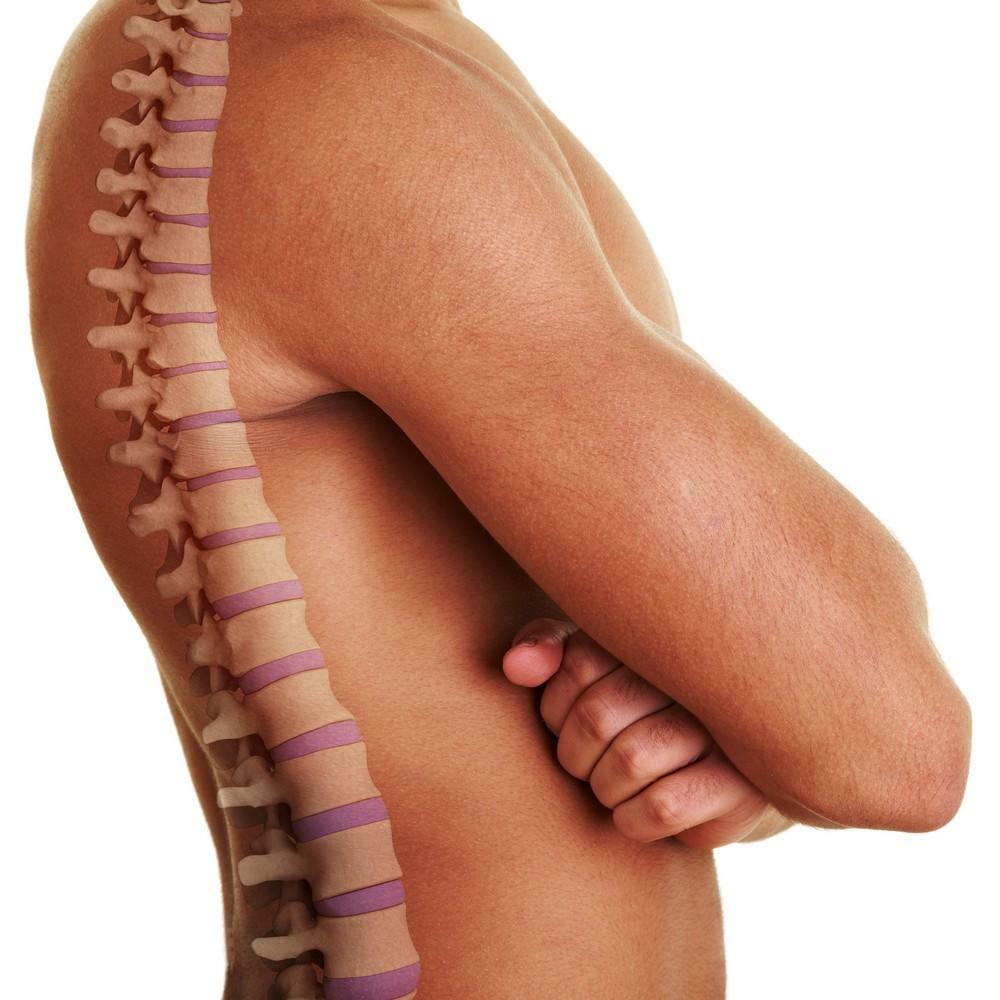
How healthy the spine looks like
The vertebral column has a natural S-curve, regarded as a variant of the norm. Along with this, under the influence of various kinds of internal and external factors, the magnitude of this curvature may change, which leads to the appearance of the corresponding pathologies.
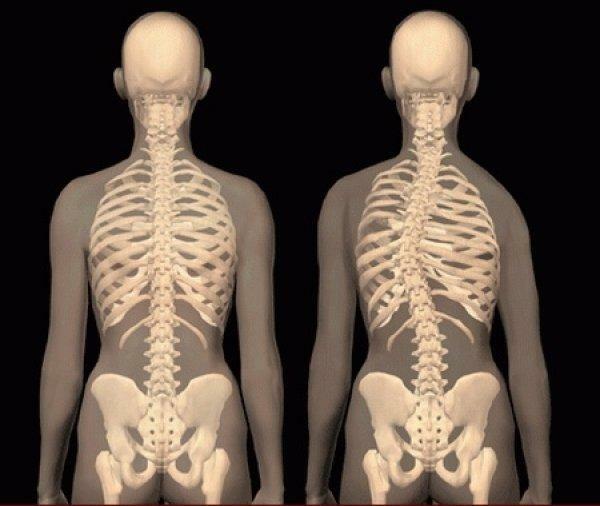
Spine Curvature
So, if excessive spinal curvature occurs anteriorly, a disease such as lordosis is diagnosed. At a curvature of a backbone to the back, there comes a speech about kyphosis .In the case of the same lateral curvature, they speak of such an ailment as scoliosis .
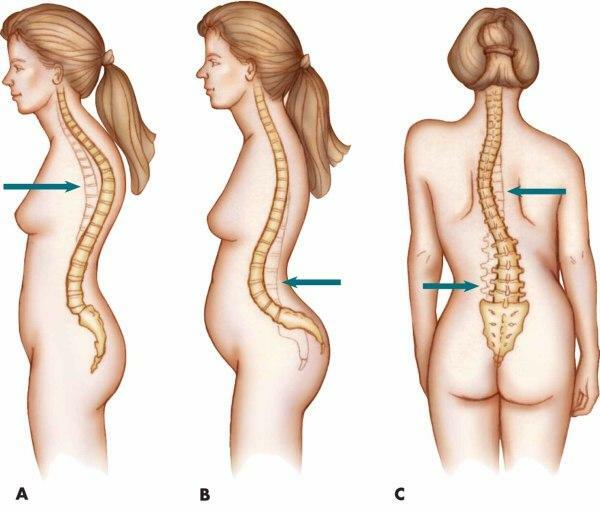
Lord and kyphosis of the spine
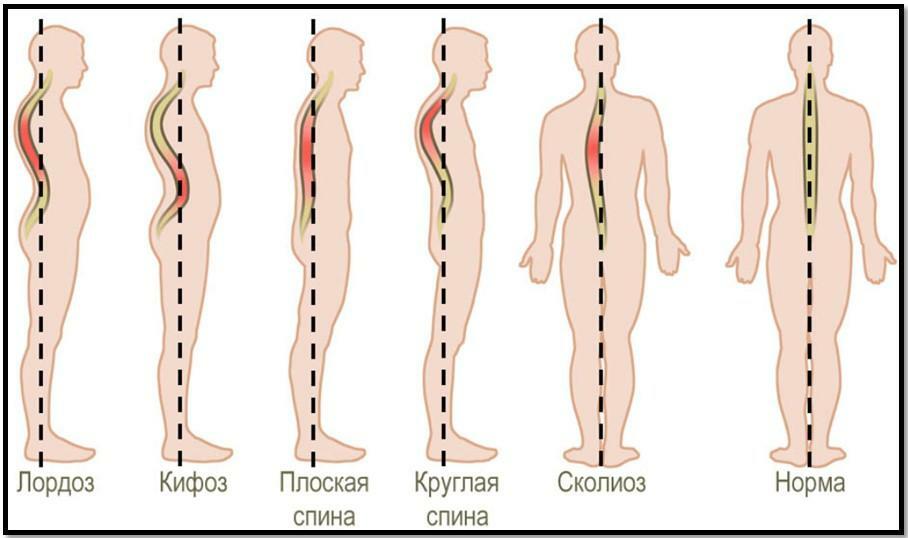
Types of curvatures
It is this disease that became the hero of today's publication. After acquaintance with further information, you will get basic information about scoliosis, the causes of its appearance, the features of manifestation and methods of treatment.
material
- 1 Content Classification of scoliosis
- 1.1 Types of scoliosis
- 1.2 Concepts right- and left scoliosis
- 1.3 Degrees
- 2 disease Causes of scoliosis
- 3 Attributes lateral curvature
- 4 Therapies lateral curvature of the spine
- 4.1 Video - lateral curvature of the spine called
Classification of scoliosis

Classification of scoliosis
At its core, scoliosis is a disease characterized by lateralie the curvature of the spinal column, accompanied by violation of the normal symmetry of the body. The characteristic external signs of the disease is, first of all, the sharp protrusion of the ribs and scapula in the right or left direction.
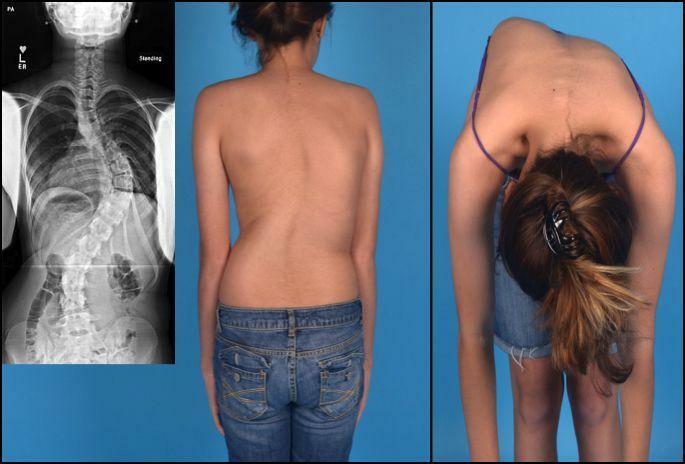
Scoliosis
In the absence of timely qualified care, scoliosis can lead to significant health problems. That's why you need to be able to understand the characteristics and features of the manifestation of scoliosis, in order to be able to turn to the doctor on time.
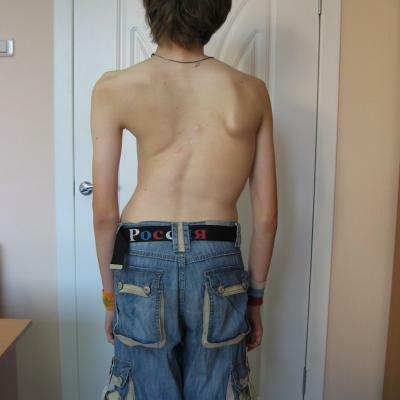
Scoliosis of the 3rd degree
Beforehand, you are invited to read information about the types and degrees of lateral curvature of the spine.
Types of scoliosis
The disease is divided into congenital and acquired forms. In accordance with the location of the curvature, scoliosis is classified into such varieties: cervical, lumbar, thoracic. The last 2 forms are diagnosed most often.

Chaklin Scoliosis Scale Scale
The table shows the classification of curvatures in accordance with possible forms.
Table. Possible forms of lateral curvature of the spine
| Curvature form | Explanations |
|---|---|
| C-shaped | The patient is diagnosed with one arc of curvature. |
| S-shaped | There are two arcs. |
| Z-shaped | The rarest variant, characterized by the presence of three arcs of curvature. |
Concepts of right and left-sided scoliosis
In the first case, the spine is curved to the right.
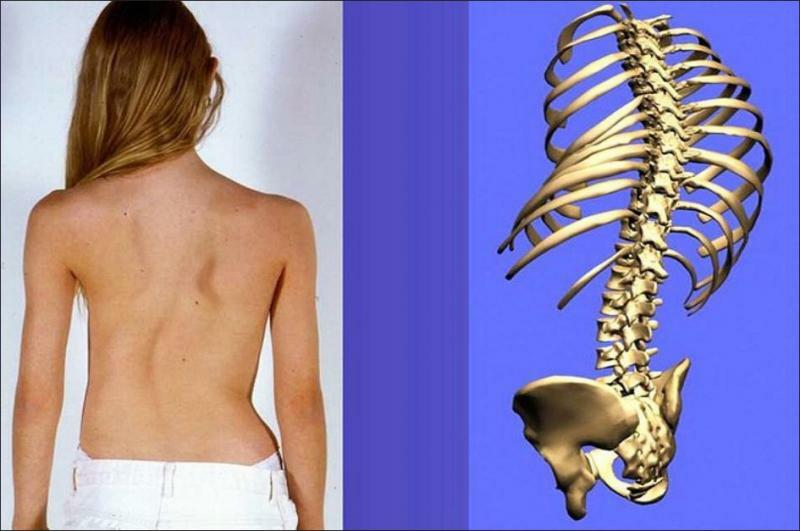
Spine bent to the right
The higher the pathological arch is, the more complex the treatment is required. Most of the pathology is found in the thoracic region. To the greatest degree the risk of developing this form of illness is affected by female patients aged 9-11 years. The causes of the onset of the disease often remain unsettled.
First, there is a slight stoop.
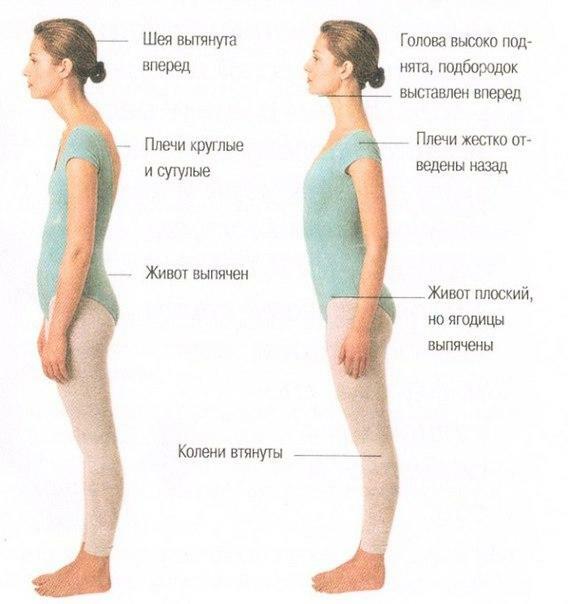
Slouching
At this stage it is difficult to confirm the presence of scoliosis. As the pathology progresses, the symmetry of the shoulder blades and shoulders is impaired. In the absence of timely treatment, in more than 70% of cases the disease is seriously progressing.
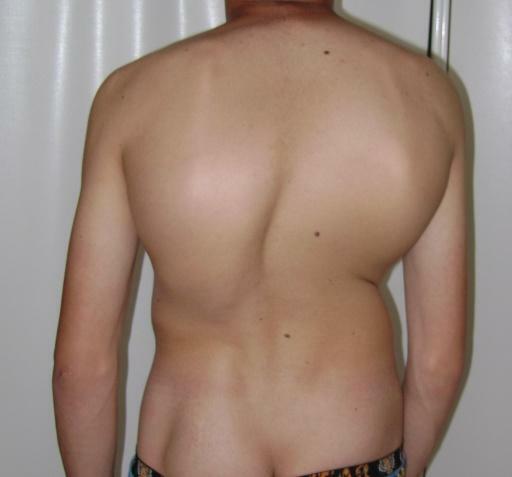
Scoliosis of the thoracic spine
In the most severe stages, deformities of the chest and the figure as a whole are noted, a rib hump can form.
With left-sided scoliosis, the spine is curved in the corresponding direction. Usually, such a pathology is detected in the lumbar region, but other areas may be affected.
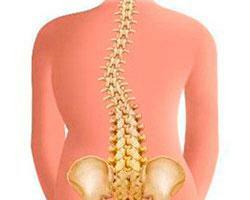
Left-sided scoliosis of thoracic and lumbar
As in the previous case, at the initial stages the disease proceeds without pronounced external manifestations. As the disease progresses, there is hypertrophy of the muscles on the right with their simultaneous underdevelopment on the left side.
Severe consequences do not appear almost never, but the risk of disease progression is still present, especially among the elderly. At the advanced stages in the patient, the area of the iliac bone begins to bulge in a complex with the asymmetry of the pelvis.
Dysplastic right-sided thoracic scoliosis 3 tbsp.
Degrees of the disease
Depending on the severity of the curvature, scoliosis is classified into 4 degrees. About them in the table. Table 1. Scoliosis Scale Scale of
Table. Degrees of scoliosis
| Curvature angle | Explanations |
|---|---|
| Not more than 10 degrees | The disease is accompanied by a slight stoop. Outwardly, the asymmetry is almost indistinguishable. The disease is difficult to diagnose and is often regarded as a variant of the norm. |
| Up to 25 degrees | There is a marked asymmetry in the pelvic region and shoulder girdle. There is a muscular cushion: on the chest side it is convex, in the lumbar region - concave. The disease requires timely treatment. Otherwise, its progression is possible. |
| Up to 50 degrees | There are pronounced deformations of the region of the chest, shoulders, ribs, pelvis. There are significant violations of posture. |
| More than 50 degrees | Fourth, and the most neglected stage of lateral curvature of the spine. It is accompanied by 2 or 3 arcs. Asymmetry is very noticeable, as does deformations in the rib and thoracic region. Internal organs can be involved in the pathological process. |
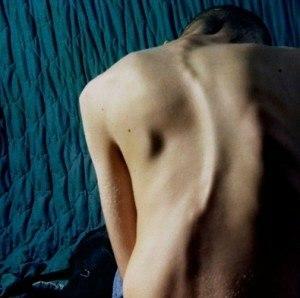
Strong scoliosis - photo
Causes of scoliosis
The main reason for the appearance of the congenital form of the disease is the violation of the bookmarking of the spinal column and its further development.
With regard to acquired scoliosis, the risk of its occurrence is most likely to affect patients of the age group 5-16 years. Violations can have structural and non-structural forms. The second is not accompanied by anatomical changes in the vertebrae.
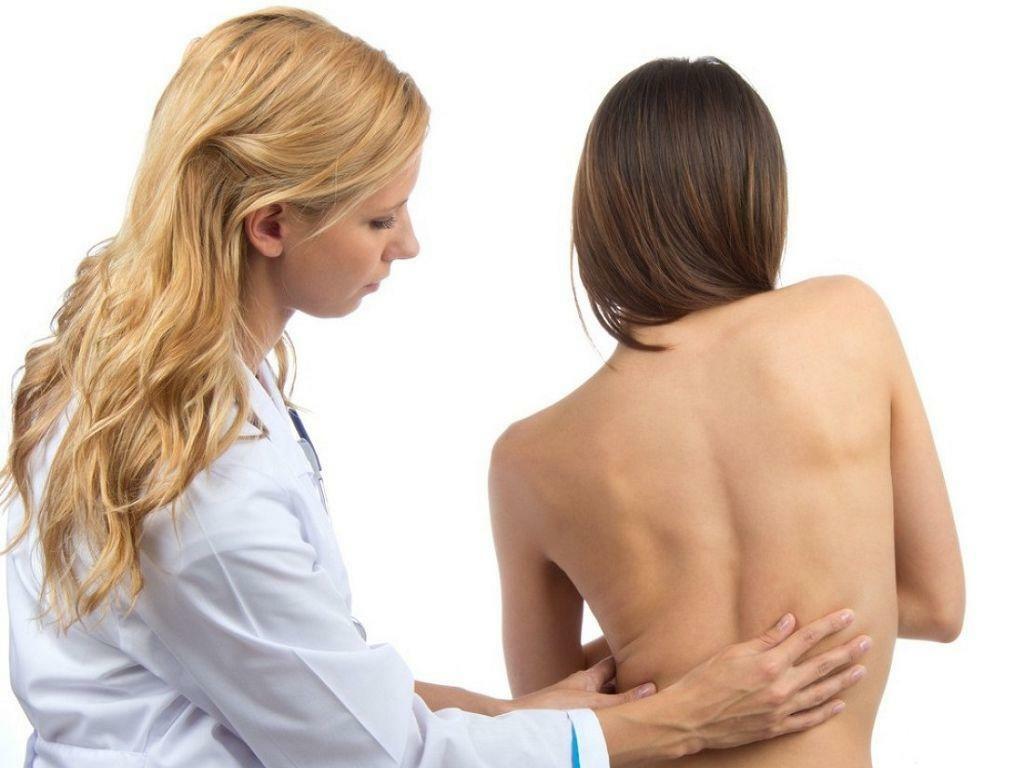
The causes of scoliosis
The list of reasons that can lead to the appearance of unstructured acquired scoliosis is:
- frequent incorrect posture, especially in school children;
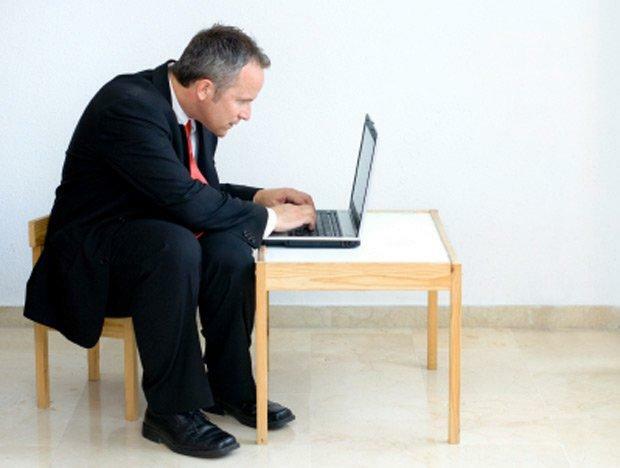
Incorrect posture
- difference in length of limbs, caused by certain anatomical features;
- leg injury, pelvic area;
- inflammatory processes affecting the muscles;
- radiculitis;
- osteochondrosis accompanied by hernias;

Back pain can lead to scoliosis of
- for certain gastrointestinal tract disorders, as well as kidney problems.
Subject to timely detection and appropriate measures, deviations caused by scoliosis are given to a relatively easy correction. If the curvature has arisen as a complication, first of all it is necessary to get rid of the underlying disease.
Regarding structural scoliosis, the situation is somewhat different. Structural changes that affect vertebrae, ligaments, as well as muscle and nerve fibers lead to the appearance of such deformations. The disease is often accompanied by pathologies of internal organs and mental disorders.
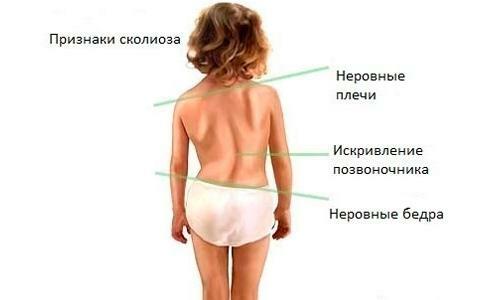
Symptoms of scoliosis
Structural scoliosis appears against the background of the following reasons:
- of genetic pathologies of connective tissue;
- organic lesions of the spinal cord;
- parathyroid gland diseases leading to osteoporosis;
- congenital disorders of the structure of the chest;
- of dystrophic muscular changes;
- injuries and neoplasm of the spine;
- syphilitic and tubercular lesions of the spine.

Spinal Curvature in Tuberculosis
Characteristic Signs of Lateral Curvature
As noted, in the early stages of scoliosis there is almost no significant external signs, but there are a number of characteristic manifestations that can be seen.
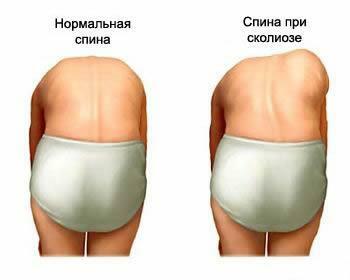
Symptoms of scoliosis when tilted
These include the following symptoms:
- asymmetry of the shoulder girdle when one shoulder is higher in relation to the other;
- differences in the distance between the arms and waist. To check the patient should take a standing position and put his hands to the sides;
- asymmetry of the blades.
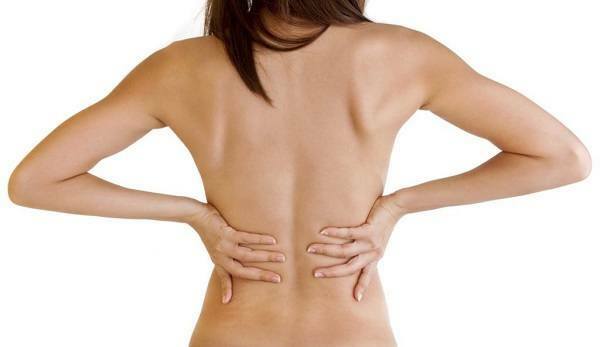
For all types of scoliosis, we can see the superiority in the side of the chest
. If the first symptoms of the disease are found, we must visit the orthopedist to undergo a detailed examination with a view to the subsequent resolution of the correct diagnosis and the appointment of an adequate treatment.
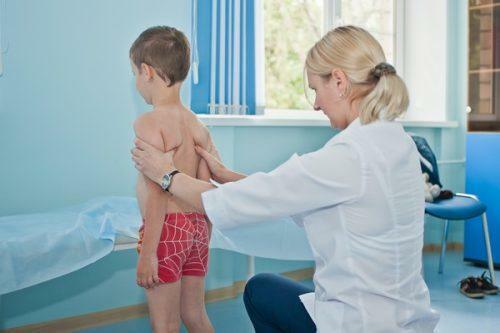
Orthopedic examines patient with suspected scoliosis
A list of diagnostic measures for is given below.
- The patient is standing upright. The doctor measures the lower extremities of the patient, studies the features of the mobility of the joints, determines the symmetry of the body. Examination of the waist and pelvis, as well as the abdomen and chest. Muscle tone is determined. Examination is carried out with respect to deformation of the ribs, the presence of muscle cushions, the asymmetry of the spine.
- The patient assumes a sitting position. The doctor measures the spine and determines the significance of lordosis. Side curvatures and unhealthy abnormalities of the trunk are revealed. Specialist assesses the peculiarities of the pelvis position.
- The patient assumes a reclining position. The specialist determines the value of the curvature of the vertebral arc, studies the state of the abdominal muscles, the features of the functioning of the internal organs.
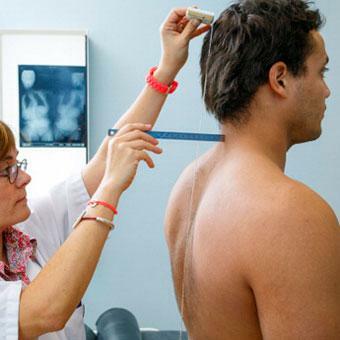
Checking the degree of scoliosis
As for instrumental diagnostic activities, first of all, perform radiographic studies. If there are suspicions of scoliosis, X-rays should be done at least once a year, better - every six months, on the recommendation of a doctor.
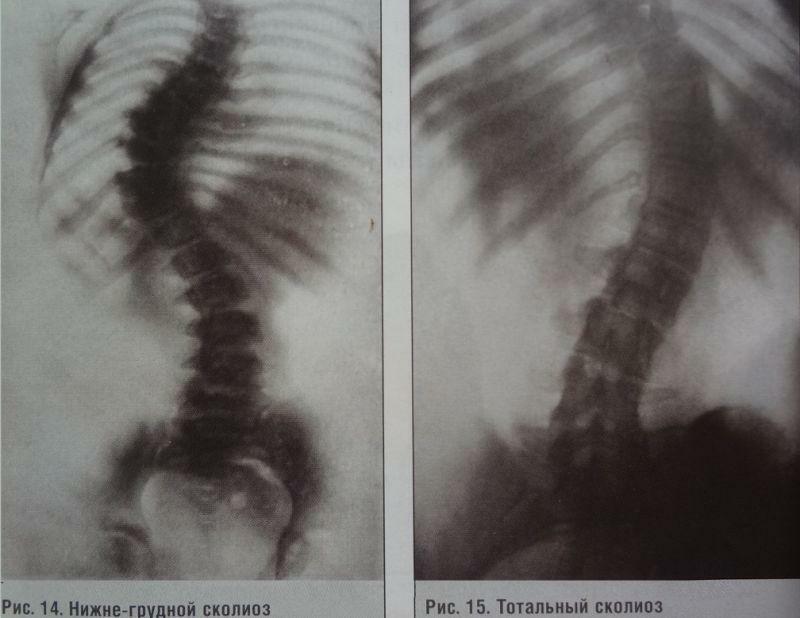
Photo of X-ray of the scoliosis of the back
The primary radiograph is usually done in a standing position, later - lying in two projections for the most reliable evaluation of deformation. In the course of acquaintance with the results of radiographs, the specialist measures the angles of the available curvatures. If necessary, the doctor sends the patient to additional radiographic examinations and magnetic resonance imaging.
Methods for treatment of lateral curvature of the spine
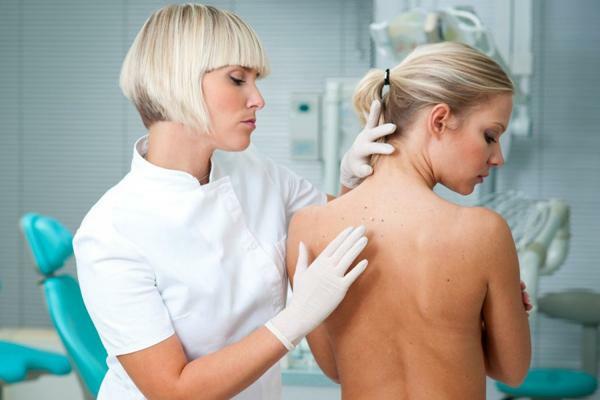
Treatment of scoliosis
Treatment of such patients is performed by orthopedists and vertebrologists. If necessary( in case of involvement in the pathological process of other organs and systems) other specialists are involved in treatment.

Vertebrology is a professional medical field that studies spine and back problems in general, and also develops methods for treating
. There are conservative and surgical methods of treatment. A specific option is determined by the doctor, taking into account the individual characteristics of the patient's condition. In any case, therapy should be timely and comprehensive.
If injuries, pathological changes in the length of the limbs and other similar moments lead to the onset of scoliosis, first of all the forces are sent to fight the original cause. For example, a patient is advised to wear special orthopedic insoles, whose forces equalize the difference in length of the legs.
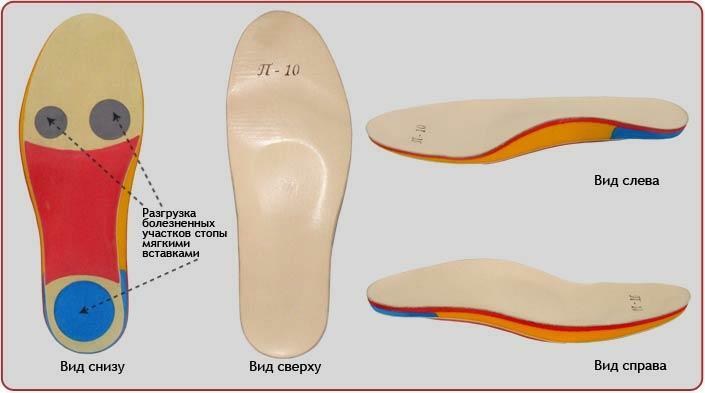
Orthopedic insole with shortening compensation
In the case of scoliosis of the myopathic or neurogenic type, conservative treatment in most situations does not have a significant positive effect, which leads to the use of surgical techniques.
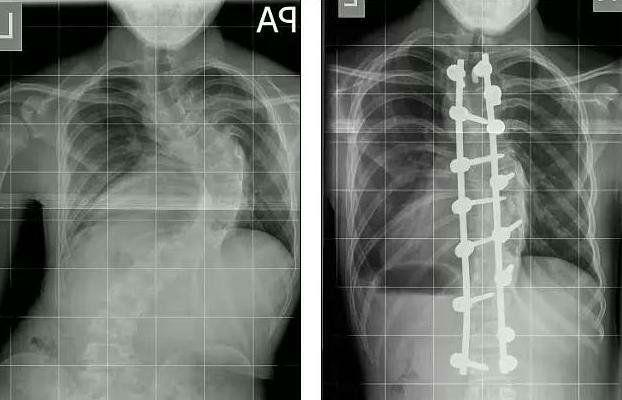
X-ray before and after correction of curvature of the spine by surgical method
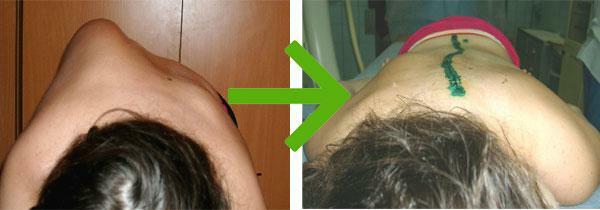
Patient before and after operation
The essence of conservative therapy of idiopathic scoliosis is usually reduced to wearing corsets and special gymnastics.

Scoliosis corset

Scoliosis corset -
Scheme In other respects, the treatment order is determined by the severity of the available curvatures.
Patients with curvatures of not more than 15 degrees are recommended by gymnastic exercises. With a 15-20-degree curvature, cortetherapy is practiced at the same time. Corset can be worn at night, and worn constantly - it all depends on the characteristics of the condition of a particular patient.

Effective and safe exercises for scoliosis
With a curvature of 20-40 degrees, inpatient treatment is prescribed in a specialized clinic. Corsetotherapy and gymnastics are practiced. If the patient's growth is completed, the corset is not used( in the previous case - similarly).

Therapeutic gymnastics is an effective technique for scoliosis.
. If the angle of curvature exceeds 40 degrees, in the vast majority of situations, the only possible option remains the operation. Indications for it are determined on an individual basis, taking into account the age of the patient, the features of the development of scoliosis, the location of the deformity and its type, the effectiveness of the previously applied therapies( if any), and the patient's overall condition.
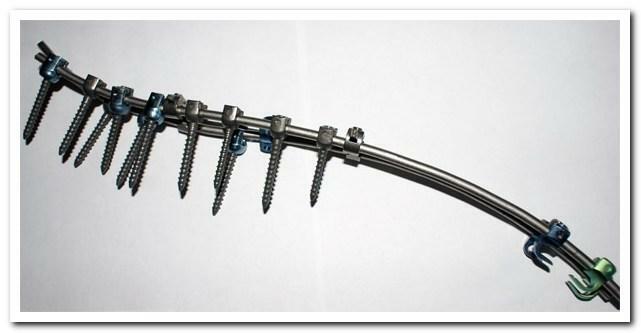
Surgical treatment of scoliosis.
rod retainer The surgically treated spine should be immobilized. Fixation is carried out with the help of hooks, plates, etc. In order to normalize the shape of the spine, expand the vertebrae and eliminate the accompanying defects, grafts can be used - special inserts.
Timely respond to adverse changes in the condition, follow medical recommendations and be healthy!


